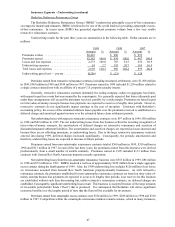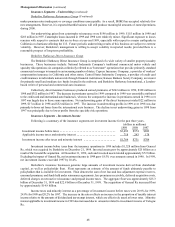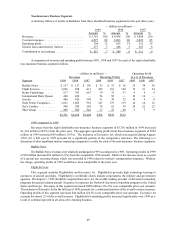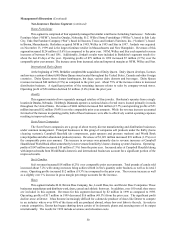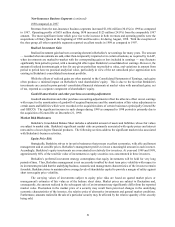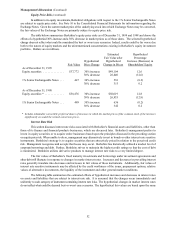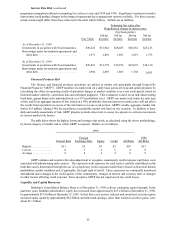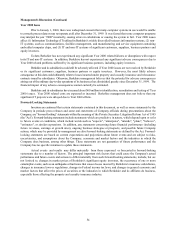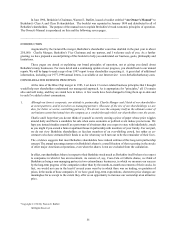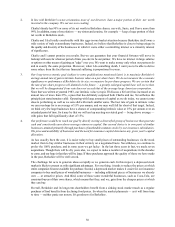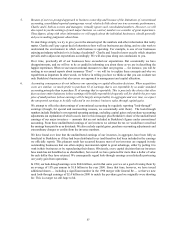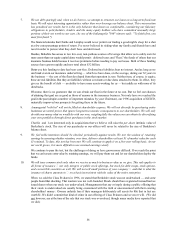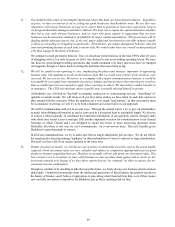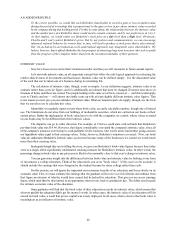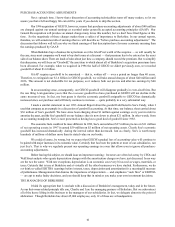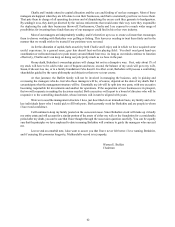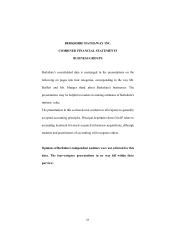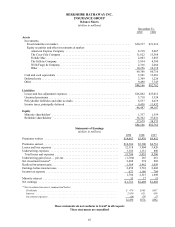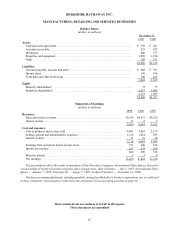Berkshire Hathaway 1999 Annual Report Download - page 58
Download and view the complete annual report
Please find page 58 of the 1999 Berkshire Hathaway annual report below. You can navigate through the pages in the report by either clicking on the pages listed below, or by using the keyword search tool below to find specific information within the annual report.57
5. Because of our two-pronged approach to business ownership and because of the limitations of conventional
accounting, consolidated reported earnings may reveal relatively little about our true economic performance.
Charlie and I, both as owners and managers, virtually ignore such consolidated numbers. However, we will
also report to you the earnings of each major business we control, numbers we consider of great importance.
These figures, along with other information we will supply about the individual businesses, should generally
aid you in making judgments about them.
To state things simply, we try to give you in the annual report the numbers and other information that really
matter. Charlie and I pay a great deal of attention to how well our businesses are doing, and we also work to
understand the environment in which each business is operating. For example, is one of our businesses
enjoying an industry tailwind or is it facing a headwind? Charlie and I need to know exactly which situation
prevails and to adjust our expectations accordingly. We will also pass along our conclusions to you.
Over time, practically all of our businesses have exceeded our expectations. But occasionally we have
disappointments, and we will try to be as candid in informing you about those as we are in describing the
happier experiences. When we use unconventional measures to chart our progress — for instance, you will be
reading in our annual reports about insurance "float" — we will try to explain these concepts and why we
regard them as important. In other words, we believe in telling you how we think so that you can evaluate not
only Berkshire's businesses but also assess our approach to management and capital allocation.
6. Accounting consequences do not influence our operating or capital-allocation decisions. When acquisition
costs are similar, we much prefer to purchase $2 of earnings that is not reportable by us under standard
accounting principles than to purchase $1 of earnings that is reportable. This is precisely the choice that often
faces us since entire businesses (whose earnings will be fully reportable) frequently sell for double the pro-rata
price of small portions (whose earnings will be largely unreportable). In aggregate and over time, we expect
the unreported earnings to be fully reflected in our intrinsic business value through capital gains.
We attempt to offset the shortcomings of conventional accounting by regularly reporting "look-through"
earnings (though, for special and nonrecurring reasons, we occasionally omit them). The look-through
numbers include Berkshire's own reported operating earnings, excluding capital gains and purchase-accounting
adjustments (an explanation of which occurs later in this message) plus Berkshire's share of the undistributed
earnings of our major investees — amounts that are not included in Berkshire's figures under conventional
accounting. From these undistributed earnings of our investees we subtract the tax we would have owed had
the earnings been paid to us as dividends. We also exclude capital gains, purchase-accounting adjustments and
extraordinary charges or credits from the investee numbers.
We have found over time that the undistributed earnings of our investees, in aggregate, have been fully as
beneficial to Berkshire as if they had been distributed to us (and therefore had been included in the earnings
we officially report). This pleasant result has occurred because most of our investees are engaged in truly
outstanding businesses that can often employ incremental capital to great advantage, either by putting it to
work in their businesses or by repurchasing their shares. Obviously, every capital decision that our investees
have made has not benefitted us as shareholders, but overall we have garnered far more than a dollar of value
for each dollar they have retained. We consequently regard look-through earnings as realistically portraying
our yearly gain from operations.
In 1992, our look-through earnings were $604 million, and in that same year we set a goal of raising them by
an average of 15% per annum to $1.8 billion in the year 2000. Since that time, however, we have issued
additional shares — including a significant number in the 1998 merger with General Re — so that we now
need look-through earnings of $2.4 billion in 2000 to match the per-share goal we originally were shooting
for. This is a target we still hope to hit.


